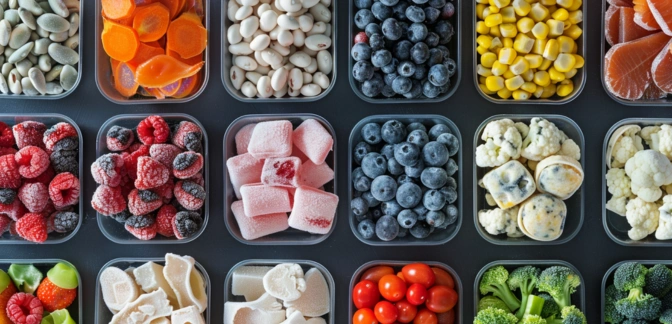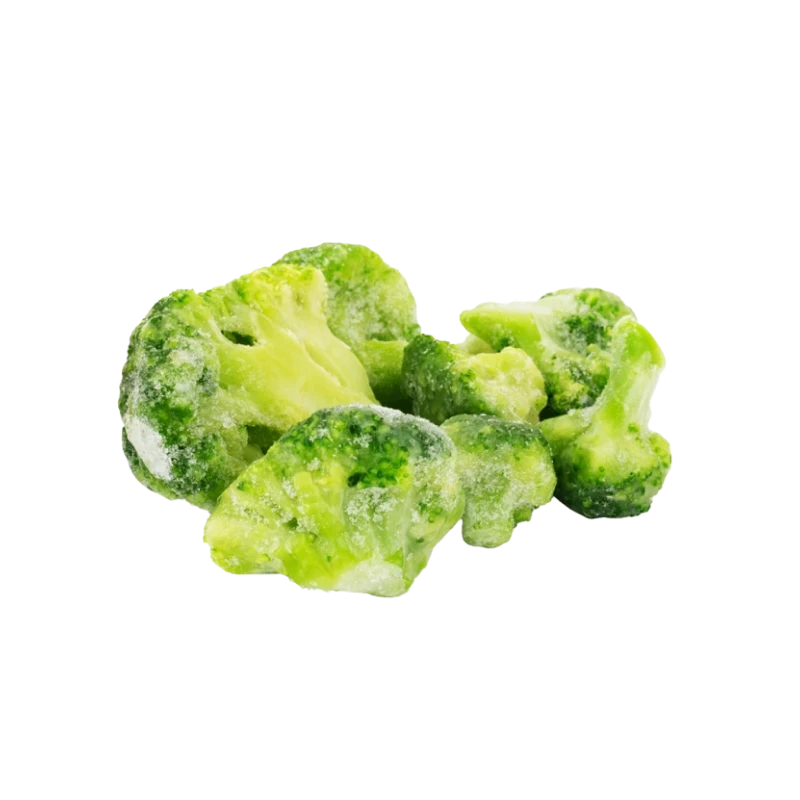Frozen Fruit — Nutrients, Health Benefits, and Shopping Tips

Written by Listonic Team
Last update on September 5, 2024
Frozen fruit nutrients
Nutrition facts
Amount per 100 g
Calories
🔥 50 kcal
| Nutrients per: 100 g | Value | % Daily Value* |
|---|---|---|
| Carbs | 13 g | 4.73% |
| Fiber | 2 g | 7.14% |
| Sugars | 10 g | 20% |
| Glycemic Index | 40 | - |
| Protein | 1 g | 2% |
| Sodium | 3 mg | 0.13% |
| Total Fat | 0 | - |
*The % of Daily Value (DV) tells you how much a nutrient in a serving of food contributes to a daily diet. 2,000 calories a day is used for general nutrition advice.
40
🟢 Low Glycemic Index
Frozen fruit facts & tips
Health benefits
- Rich in vitamins and minerals such as Vitamin C, potassium, and folate, which support overall health and well-being.
- High in fiber, promoting digestive health, regular bowel movements, and maintaining a healthy gut microbiome.
- Contains antioxidants, which help protect the body from free radicals and reduce inflammation.
- Convenient and long-lasting, providing a quick and easy way to include fruits in your diet year-round.
Health risks
- Potential for loss of nutrients as freezing may reduce the levels of some vitamins and minerals compared to fresh fruit, though this is generally minimal.
- Potential for freezer burn which can affect the texture and taste of the fruit if it is stored improperly or for too long.
- Potential for pesticide residue on conventionally grown frozen fruit, which can pose health risks if not properly washed or sourced from organic suppliers.
- Risk of allergic reactions in some individuals, particularly those allergic to specific types of fruits, causing symptoms like itching, swelling, or difficulty breathing.
How to choose frozen fruit
Frozen fruit should display vibrant colors typical of the fruit when fresh, and each piece should be individually frozen, not stuck together. There should be minimal ice crystals, indicating the fruit was frozen quickly to preserve quality.
Avoid frozen fruit that shows signs of freezer burn or has large clumps of ice, as this often results from repeated thawing and refreezing, degrading the fruit's texture and taste. Bags with tears or punctures should also be avoided, as they compromise the sterility and freshness of the fruit inside.

How to store frozen fruit
Frozen fruit should be kept in the freezer in its original packaging or an airtight container. This ensures it stays fresh and maintains its nutritional value for up to a year. Proper storage helps preserve its taste and texture.
Repeated thawing and refreezing can degrade the quality of frozen fruit. Avoid leaving it out at room temperature for extended periods. Always reseal the package tightly to prevent freezer burn and maintain the fruit's freshness and flavor.
✅ Extra Tip
How long does it last?
Frozen fruit can last for 8-12 months when stored in an airtight container or freezer bag. To maintain its quality, keep it at a consistent freezing temperature. Proper storage helps retain its flavor and nutritional value, making it ideal for smoothies and desserts.
What to do with leftovers?
Leftover frozen fruit can be used in a variety of sweet and refreshing dishes. Blend it into a smoothie with yogurt, milk, and honey for a quick breakfast, or mix it into a pancake or waffle batter for added flavor and texture. Frozen fruit is also great when used as a topping for yogurt, oatmeal, or cereal.
Use frozen fruit in a fruit salad by thawing it slightly and mixing with other fruits and a drizzle of honey. If you have a lot of frozen fruit, consider making a batch of fruit compote by simmering it with sugar and lemon juice until thickened, perfect for serving with pancakes, ice cream, or cheesecake. Frozen fruit can also be baked into muffins, scones, or pies for a burst of fruity flavor. For a quick snack, enjoy frozen fruit on its own, or mix it into a bowl of granola and yogurt for a light and satisfying treat.
👨⚕️️ Medical disclaimer
Discover products from other categories
Listonic Team
Fact-checked
Our editorial team checked this article to make sure it was accurate at the time of publishing it.
Get the top-rated shopping list app







